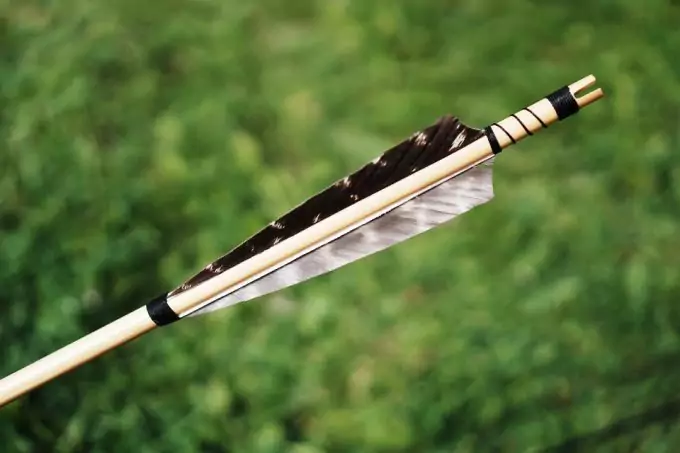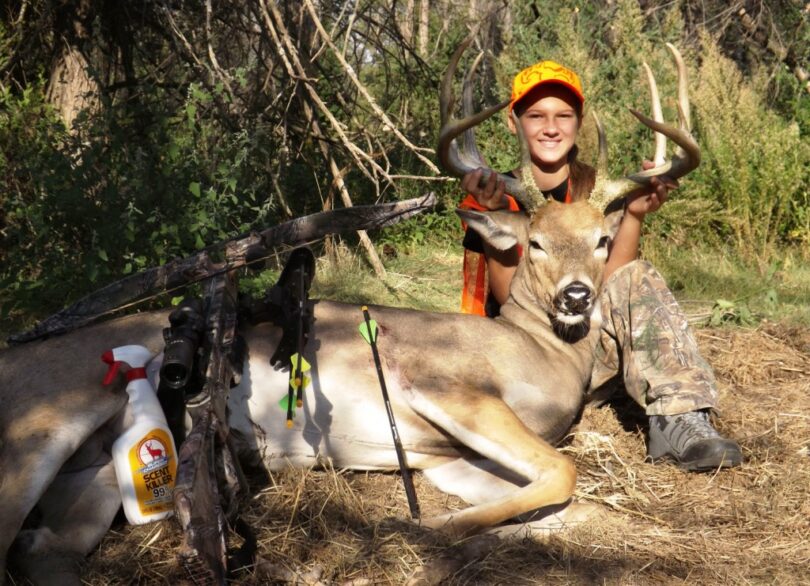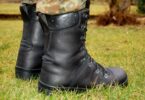Crossbow hunting tips are quite helpful for the neophyte just looking to master how to use such sensitive equipment for hunting live prey. The tips that are available will help answer many of the questions a new hunter may have about equipment, the use of the crossbow, and what it is like to use such equipment for the purposes of hunting.
A hunter who is used to using alternative weapons for hunting has a lot to learn about handling the bow, how the equipment is loaded, using the bow and trigger, and how to go about honing his or her skills.
Game and crossbow hunting
Hunting with this type of weapon is a powerful, amazingly accurate, fast, and clean method for hunting. You can use it in North America to hunt big-game animals like the moose, bear, and deer. In New Mexico, you can use the bow to hunt for cougars, Elk, and both bighorn and Barbary sheep.
Additional animals you can sometimes hunt for with a crossbow include pronghorns, Persian ibests, oryx, and javelin. If you plan to learn how to go hunting with a crossbow, you will need to find out the laws in the area where you plan to hunt so you know what kind of prey you can take legally.

Hunting with this type of bow sometimes requires that you take an educational course. Even if the law does not require it, a bow hunting course is a great opportunity for you to learn all about the safety measures you need to take when using your weapon of choice. A safety course can introduce you to the different parts of your weapon, basic use of the crossbow and arrows, safety measures, and it can teach you how to hunt ethically.
A safety course is definitely something a young hunter can benefit from as well, as it will guide the child on how to hold, load, and fire the weapon safely, how to care for the weapon, and how to behave in a respectful manner when hunting. Often times safety courses are available for free or for a nominal entry fee.
See our tips and guidelines on how to shoot a bow and arrow for more information.
Choosing your crossbow
When hunting with a crossbow, you will want a top quality weapon for use. Bear in mind that price, while important, should not be your only consideration when you are looking for a quality crossbow for your hunting needs. When shopping for equipment, you will find you can buy the bow and arrows separately, or you can buy an entire package containing accessories. The packages available include things like a basic scope sight, arrow tips, and a couple of arrows, a quiver, and a cocking device.
The top of the line packages can cost as much as $1,500 or greater. Just the bow alone can cost between $300 and $1,000.

The type of draw weight you require will be based on the type of prey you want to hunt. If you are considering hunting white tail deer, you will need between 75 and 125 pounds in terms of a draw. You should check out laws in your area to see if the draw weight is already defined for you under the hunting laws already in existence.
Some crossbows have draw weights in excess of 200 pounds, but such a bow will be useless to the hunter who is hunting in an area that does not legally allow a bow with that weight in terms of draw. The higher the draw weight, the greater the speed of the arrows you shoot. When hunting with a crossbow, the speed of the arrow delivers a cleaner kill when traveling at faster speeds.
Learn the basics
If you buy an expensive unit, you will get a device that is quieter. It will also offer faster arrow speeds. The more expensive devices come fitted with high tech magnification scopes, stocks with adjustable features, and you can even get a crossbow fitted with a red dot scope.
There are cocking aids you can buy that make it easier to cock the device. Some aids come with clip on clamps and a crank. When you turn the crank it causes the string to pull back slowly. If you have purchased a bow and find you are having trouble pulling back the strings on the unit, a nominal investment in a cocking aid is recommended.

Some of the upper level crossbows are fitted with dampeners on the split limbs, retention strings, and stirrup. You can also buy dampeners and add them to the unit you choose. Bear in mind that the crossbow is still releasing an arrow under tremendous force and it still makes quite a bit of noise doing so.
When choosing the equipment you want to buy, there are simple bows with recurved limbs and bows with compound limbs. The simple recurved bow features a single string and a wider profile while the compound bow has two strings. Understanding the bow’s profile is important if you plan on hunting in a blind where a crossbow with a smaller profile is more desirable. Bear in mind that the recurved bow is easier to repair than the compound crossbow.
Choosing the arrows
When you are buying arrows you will find they are manufactured out of different materials. The package your crossbow comes in should include details on the kind of arrows you need, including the weight and length of the arrows.

If you use an arrow that is not the correct weight or length for your crossbow, you can end up with broken arrows, which proves costly and frustrating in short time, and you also run the risk of having an arrow go rogue and off in a direction you never intended. The choices in arrows include:
- Carbon;
- Aluminum;
- Carbon & Aluminum Mix.
Aluminum arrows are not as durable as their carbon counter parts. The aluminum arrows bend more easily and are prone to breakage. As a new crossbow hunter, you will want to use carbon arrows or the carbon & aluminum arrows over straight aluminum offerings to ensure less breakage, bending, and potential frustration. Finally, in terms of the weight and length you will need for your model crossbow, you must check the manufacturer’s recommendations. Arrows range in length from about 16” to 22.”
The vanes (fletchings) you need for your arrows are what will give the arrows their flight ability. They vanes must be good quality, straight, and installed correctly. Any deviation in the structure of the fletchings can cause arrows to fly incorrectly. The arrows you buy will also need to have the correct nock that is specifically created for crossbows.
The importance of design
Understanding crossbow safety comes with understanding how it is designed. These equipments all vary in terms of design, but they do have some similar features. From the top of the crossbow used to point at prey features a foot stirrup. Below the stirrup are riser and limb bolts that feature a cable and string from one end of the curved unit to another. The curved limb sometimes has split limbs, and the unit has two risers that attach to the upper portion of the fore grip, and trigger, ending just before the upper portion of the stock.

The sight comes in a variety of styles and is attached to a sight bridge, which is attached to the main device at the location where the stock ends, and the trigger area begins. Running along the arm’s length of the crossbow is the power stroke and flight groove (also called arrow track) that holds and directs the arrow when you shoot it. Some devices hold a quiver of arrows just beneath the curved limbs of the unit. Just below the telescopic sight on the crossbow is an arrow retention spring.
Understanding the speed
If you want a fast crossbow, you will want to get one that features a longer power stroke. The power stroke’s length directly parallels the speed of the arrow you release when you pull the trigger on the crossbow. Some devices with long power strokes can shoot up to 400 feet per second.
You will, however, need to also keep in mind that the weight of your arrows will directly affect the speed of the arrow’s motion when fired. If you use very light arrows with a crossbow featuring a power stroke of 400 feet per second, the arrow is going to have a rapid release and it will move extremely fast.
While there is a standard set for regular compound bows in terms of speed, there are no standards in place for crossbows. This means that every model can say something different about the speed of any projectile, and not all devices will have identical speeds, even if the manufacturers suggest the speeds are the same. When it comes time to buy a crossbow, you will need to ask questions about the poundage, the speed, and the weight of the arrows you choose, because all of the latter factors play into just how fast the arrows travel when shot from your crossbow.
Cocking safety
When you start out practicing your shots, you will find that the majority of bows have similar features in terms of the loading method and how you cock the equipment. The foot stirrup is placed on the ground and you can slip your foot firmly through the stirrup ensuring it will remain in position as you cock the crossbow. Once you ensure your foot is in the stirrup and the bow will not move, use both of your hands to grab the string connected to each end of the curved limbs.

If you pull on one string harder than the other, it makes the strings off-center and it affects the firing accuracy. If you have difficulty with this step, you can buy devices that will help you cock the crossbow, including elastic straps and alternative aids that will make the process easier on you. Whatever means you use, you will need to pull both strings back until you reach the cocking mechanism.
Once you get the string in position, you should listen for a clicking sound to ensure the strings are in place. Letting go of the strings before hearing the sound can cause the two strings to snapback abruptly. If you cock the bow correctly, you may have to set the safety manually. Some models have an automatic safety. Whatever the case, the safety needs to be set so you will not fire off an arrow by accident.
More using tips
Once you have cocked the crossbow and engaged the safety on the device, you can insert an arrow into the arrow track. The end of the arrow needs to come in contact with the string. One of the straight fletchings will rest inside the groove of the crossbow. When you are hunting with a crossbow, make sure you are always aware of where you are pointing the crossbow, especially when the device is cocked and an arrow is in the track.

Before triggering the release of the arrow from the crossbow, examine the pathways in front of the arrow and the curved limbs on the device. Make sure that there is nothing that will disrupt the path of movement: If you have anything in the way, it can result in injury because arrows travel at a considerable speed once released.
The curved limbs also move, so you want to make sure your crossbow has plenty of clearance from nearby trees or branches before you trigger the release of the arrow. Once you are prepared to fire the arrow that is when you can release the crossbow’s safety.
Make sure you never dry fire the crossbow. Dry firing the equipment can result in string breakage, and it can fracture the upper limb of the device as well. In fact, multiple fractures can result from this action. Meanwhile, small pieces can break off the bow and turn into rogue projectiles.
Hunting Laws
The laws regulating crossbow hunting vary from on state to another and below are the regulations you will find in states across the nation. To find out more about laws in your area, check out local laws for your state.
States like Alabama, Alaska, Arizona, and Illinois allow disabled hunters to get a permit so they can use such a device during hunting season. In some cases, only disabled hunters can hunt live game with crossbows. States like Montana offer no provisions for disabled hunters whatsoever.

Delaware and Indiana define what seasons hunting is allowed using such equipment: some states allow for the use of the bow during deer season, and other states allow for the use of the bow during archery season. States like Kansas and Kentucky make crossbow hunting legal for everyone.
Some states, like Alaska, allow only certified hunters to use a crossbow when hunting. The same state will not allow the crossbow user to make use of optical enhancing equipment and scopes. States like Arkansas, Maryland, Florida, and Delaware define the type of arrows one can use on specific game: The same state has banned the use of poison on arrow tips.
Some states define the minimum pull weight of the crossbow you can use. For instance, Delaware’s regulations call for the use of a crossbow with a 125-pound minimum pull weight. The same state goes as far as to define the year of manufacture: as all crossbows used for hunting must be made after 1980.
More about regulations
In the US and Canada, those areas allowing crossbow use for hunting have strict rules, especially defining seasonal use. Many states only allow the hunter to hunt deer with such equipment. However, states like New Mexico allow the bow hunter to hunt for a wide selection of live prey, including: Barbary sheep, bear, bighorn sheep, cougar, deer, Elk, Javelin, Oryx, Persian ibest, Pronghorn, and turkey.

A few states disallow the use of magnifications and scopes with crossbows and Oregon does not allow the use of crossbows for hunting or any other circumstances. The majority of the states that do allow for the use of bows during hunting excursions require the hunter to have a hunting permit or license. See our article on how to get a hunting license – it’s an important read for everyone.
The regulations pertaining to the provinces in Canada also vary. In Alberta, hunters can use crossbows during all seasons except archery season. In Manitoba, you can use a crossbow during muzzleloader and rifle season for hunting deer. In Newfoundland, British Columbia, the Northwest Territories, and the Yukon Territories, crossbow hunting is illegal. If you are in New Brunswick, you will have to be a certified hunter who has also taken a bow hunter education course that you will have to present when you apply for your hunting license.
In Ontario, crossbows are legal, but the draw must be at least 119 pounds for hunting moose and bear and 99 pounds for hunting deer. In Saskatchewan, you can use the crossbow during muzzleloader season.
About hunting ethics
When you are hunting with a crossbow, you need to behave in an ethical manner. There are acceptable norms for hunters, and by practicing them, you can ensure you protect the environment and the safety of yourself and others. Hunters who take their pursuits seriously maintain a respect for nature and other people. They make safety an utmost priority.
Respecting nature and others requires all of the following:
- Ensuring that natural resources are not diminished or destroyed while hunting. This means that you do not leave trash behind or wreak havoc in the natural environment where you hunt.
- Sticking to the rules of fair chase, and not baiting animals with food or other means.
- Doing everything to ensure a kill is humane and clean so the animal does not suffer. This means honing your skills and only taking shots you’re relatively sure will result in a clean kill.
- Avoiding the injury of young animals. Many hunters will not hunt small deer or other young animals out of respect for nature.
- Ensuring nothing of the kill goes to waste. If you kill an animal it should be done for the purposes of getting the meat. If you do not use the animal, at least give the animal to someone who will.
- Avoiding killing just for the sport. Killing for the act of getting a nice set of antlers on your wall as a trophy is not acceptable.
- Adhering to the laws of the land and state. Every state has different laws pertaining to when you can hunt, what you can hunt with, and what prey you can hunt. It is your responsibility to familiarize yourself with such laws.
- Demonstrating respect and concern for other hunters in the area. When working your way toward your hunting spot, you want to keep as quiet as possible so you do not disturb the natural environment or ruin the hunt for others. Making sure you do not intentionally or unintentionally interfere with another hunter’s ability to hunt.
- Hunting while free of drugs or alcohol.
- Respecting the rights of property owners and not trespassing.
- Hunting only when the hunting season is active.
When you adhere to the above code of ethics, it makes hunting more enjoyable for you and others. It also ensures you encounter little difficulties during the hunt, so you can spend more time dedicated to actually enjoying the hunting experience.
To learn more tips on how to scout and hunt for elks, read our article on this interesting topics.
In summary
When you want to go hunting with a crossbow, there are many things you need to do to prepare.

You will need to get the best crossbow to suit your needs, and there are myriad considerations pertaining to the features you will want in your crossbow. You should also get plenty of practice in shooting the crossbow before going for the live kills. You want your shot to be accurate to ensure a clean and humane kill.
Check out our article on the top crossbow hunting for more insight and information.






I have constantly cherished utilizing a crossbow while hunting; it takes a great deal of fiddling around, committing errors, a little good luck, and a considerable measure of persistence to appreciate this weapon.
Aiming is the primary issue with utilizing a crossbow. It takes some practice and can get precarious but once you get acquainted with it, it turns out to be second nature.
The performance of a crossbow does entirely depend on your knowhow. This article is all about helping you be the best archer.
I have a crossbow pistol, and it is awesome for hunting squirrels and rabbits and other smaller animals.
however I find that they don’t work well past 20 yards. If you keep the animals close and personal you will have a lot of success.
If you select the best crossbow with a shooting speed of at least 300 FPS, you should be able to hit a 50-yard range.